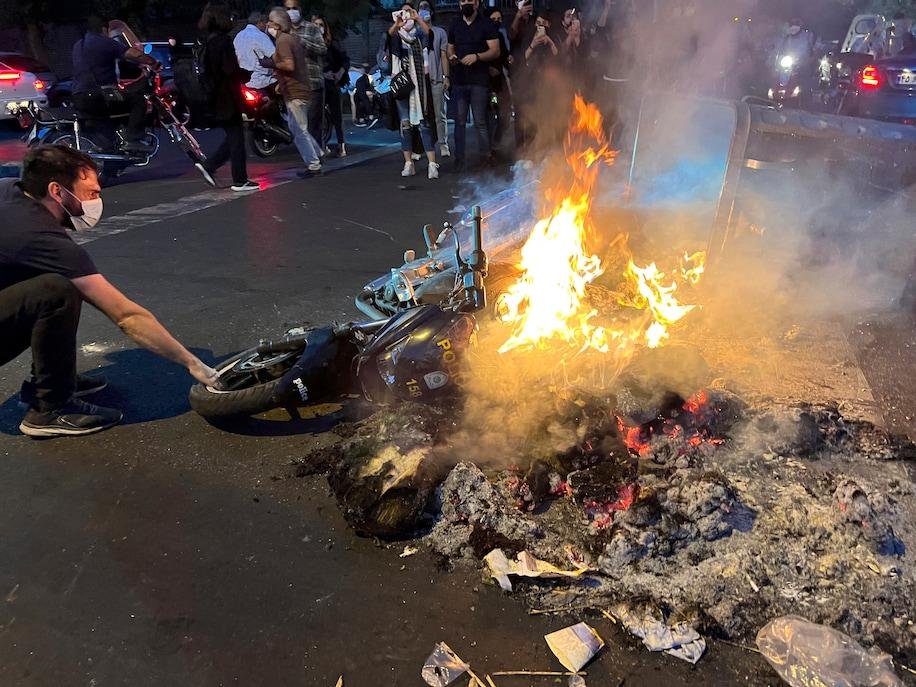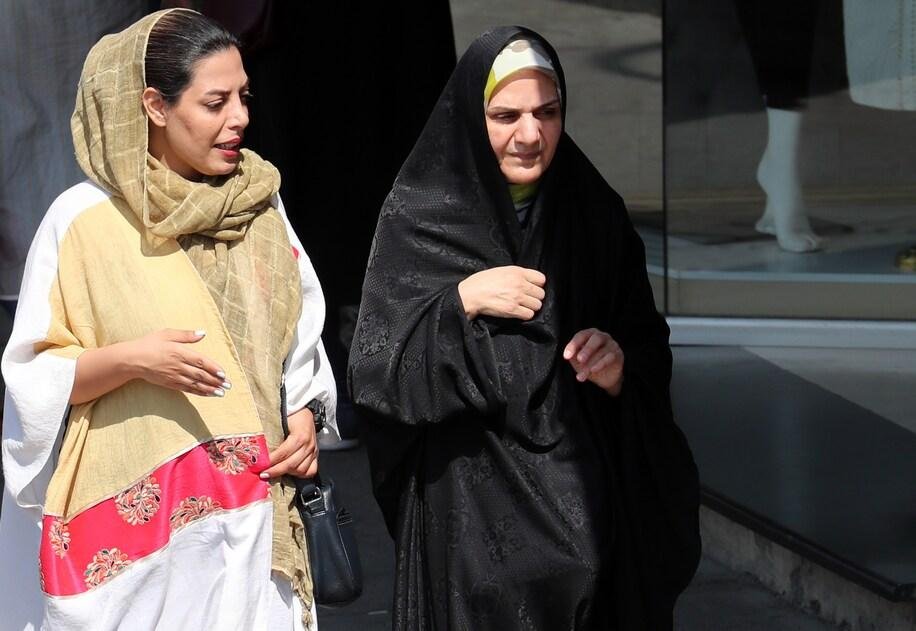Iranians enraged over hijab rules, after woman’s death in police custody Protesters demand end of clerical rule
Five people have reportedly been killed in protests that spread to several Iranian cities since the death of Mahsa Amini in police custody for violating hijab rules.
Mahsa Amini, 22, was arrested by Iran's morality police on September 13 due to her "improper appearance" contradicting Sharia rules, before supposedly falling into a coma and dying in a hospital in Tehran on September 16.
Iranian police attributed her suddenly falling ill due to "heart problems", meanwhile, social media users believe that Amini fell into a coma as a result of abuse by police while in detention. Before her death, Iranian President Ebrahim Raisi had ordered the Interior Ministry to conduct an inquiry into the events.
Street protests
Demonstrations have broken out in several Iranian cities, mainly in Kurdistan Province after the death of Amini on September 16. They have expressed frustration at the mandatory rules for wearing hijab - a women's headscarf, moral police, and the theocratic regime and ideology in the country.

The wave of protests is continuing on social media, as some Iranian women posted pictures and videos where they were cutting off the locks of their hair in protest, using anti-government slogans and hashtags after Amini's name in English and Persian.
Five protesters were killed and over 100 wounded in Kurdistan Province "by direct fire" from security forces beginning on September 16, according to the Hengaw Human Rights Organization.
Protests also spilt over into universities in Tehran and Isfahan, as well as many other campuses in the capital. Tehran University students on September 18 organised a protest chanting "woman, life, freedom". Some female students of Shahid Beheshti University called for the end of clerical rule and took out their headscarves in protest of mandatory hijab laws.
In the central streets of Tehran, demonstrators chanted slogans against the supreme leader - "Death to Khamenei," while women removed their headscarves in protest.
Following calls by opposition activists, some businesses shut down in the Kurdish-populated provinces of Kordestan, Kermanshah, Ilam and parts of West Azarbaijan province.
Meanwhile, the Fars news agency, affiliated with the Islamic Revolution Guard Corps (IRGC), wrote in its coverage that the number of demonstrators stood below 300, some of whom burned public litter bins and threw rocks at police vehicles. "The riot police dispersed the protesters using batons and tear gas," it added.
Government’s reaction
Amid growing public anger, Iran’s President Ebrahim Raisi expressed his condolences in a phone call with the Amini family on September 18. "I have directed officials to closely investigate the issue so that no right is violated," Raisi said, adding that "your daughter and all Iranian girls are my children and I do feel like I have lost a loved one".

The Iranian judiciary has launched a probe, and a parliamentary committee is also looking into the incident.
According to Jalil Rahimi Jahanabadi, a member of the parliament's National Security and Foreign Policy Committee, a bill aimed at restricting police authority in its dealings with members of the public was being processed.
Despite growing criticism, the Iranian police deny any misconduct. According to the Tehran police chief, any accusation about Amini’s death “is an absolute lie," as she suffered “sudden heart failure”.
For their part, the Iranian pro-government media outlets described the student rallies as "gatherings in memory of Mahsa Amini", rather than protests.
Fars News accused foreign news agencies of manipulating public protests following Amini’s death. Mentioning the massive amount of news published by London-based Iran International, Voice of America and BBC in the last three days, the hardline agency said that “the name Mehsa Amini is not important for the enemy, and what is important is the use of this character to advance media goals”.
Mandatory hijab
Tehran’s severe prosecution of the Islamic dress code has been one of the most argumentative social issues for decades, but the government has stepped up its crackdown on anti-hijab law activists in the last few months.
The hijab has been compulsory for women in Iran since the 1979 Islamic Revolution and the morality police, known in Persian as Gasht-e Ershad (Guidance Patrol), are charged with enforcing this and other restrictions. The morality police which was established in 2006, work closely with the judiciary and the Basij, a hard-line paramilitary unit affiliated with the IRGC.

Since a hardline cleric Ebrahim Raisi took office last year, dress code rules have become tighter. The government crackdown sparked a protest movement over the summer by Iranian women, who photographed themselves without headscarves and posted the pictures on social media.
Amnesty International documented at least 92 deaths in custody resulting from "deliberate" denial of lifesaving medical care to Iranian prisoners from 2010 to 2021. In February 2018, Iranian police announced that 29 women who removed their headscarves in public as a sign of protest against the law requiring women to veil in public had been arrested.
Masih Alinejad, a US-based Iranian journalist and activist, started the White Wednesdays campaign in May 2017, encouraging women to wear white headscarves or take them off in public as a sign of protest. In 2014, Alinejad created My Stealthy Freedom, a social media platform that encourages women in Iran to protest what is a strict law of obligatory hijab, by posting pictures of themselves in public places without their headscarves.
In December 2017, an Iranian police chief announced that the country will no longer detain women who violate the Islamic dress code.
Former moderate President Hassan Rohani often pressed for relaxing some of Iran’s morality-related laws, which has irked hardliners that tend to dominate Iran’s security forces and the judiciary.








